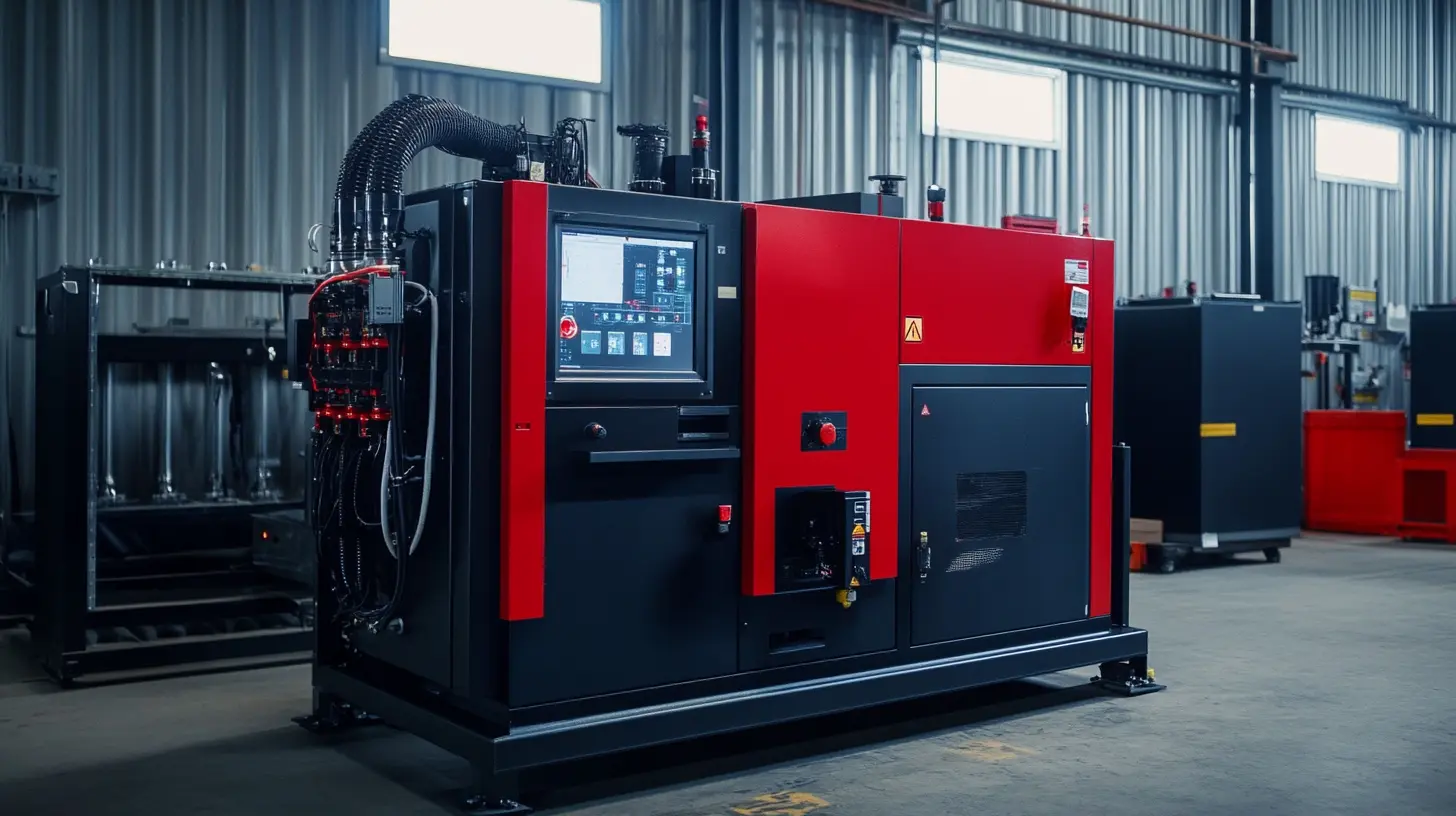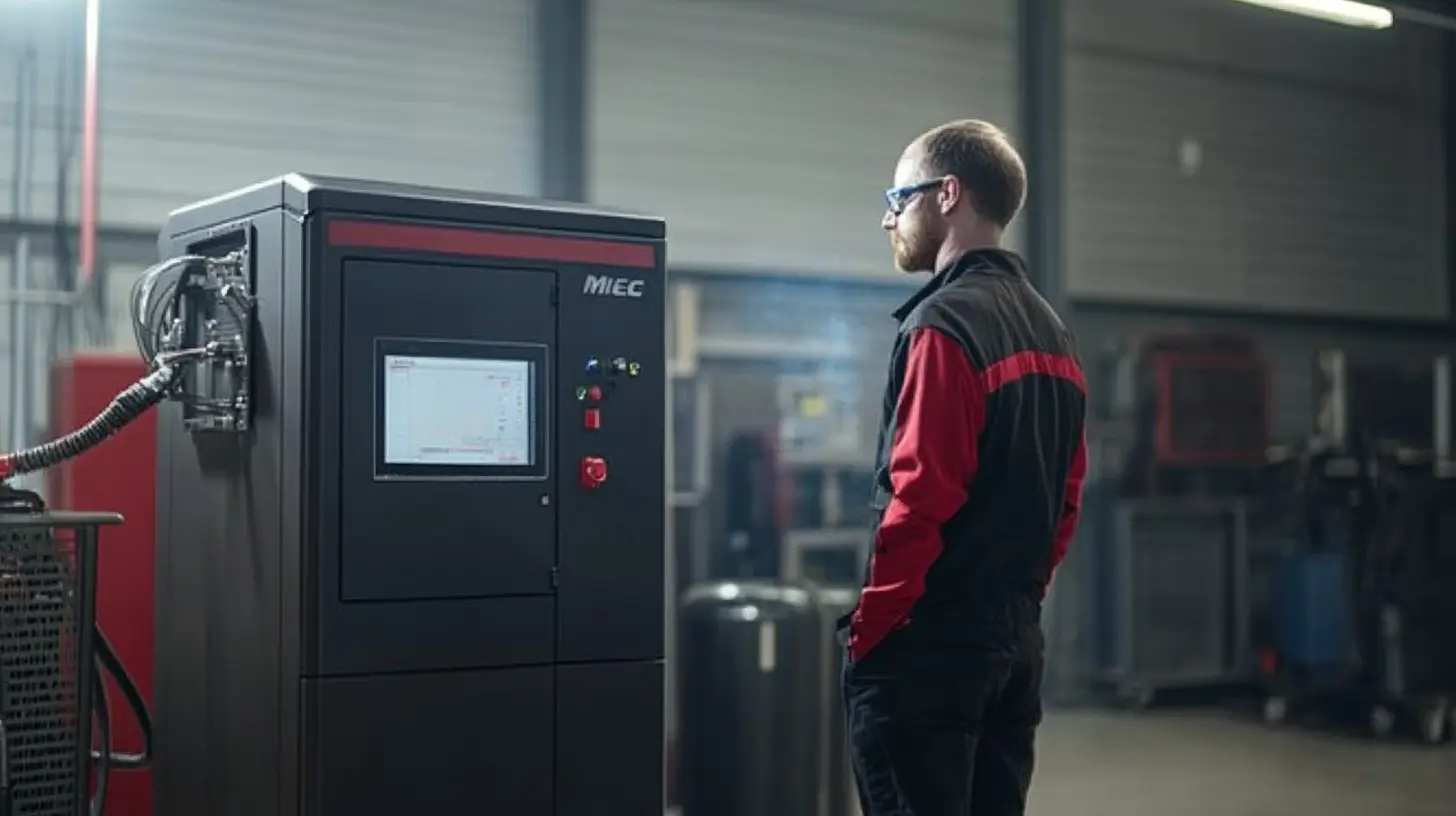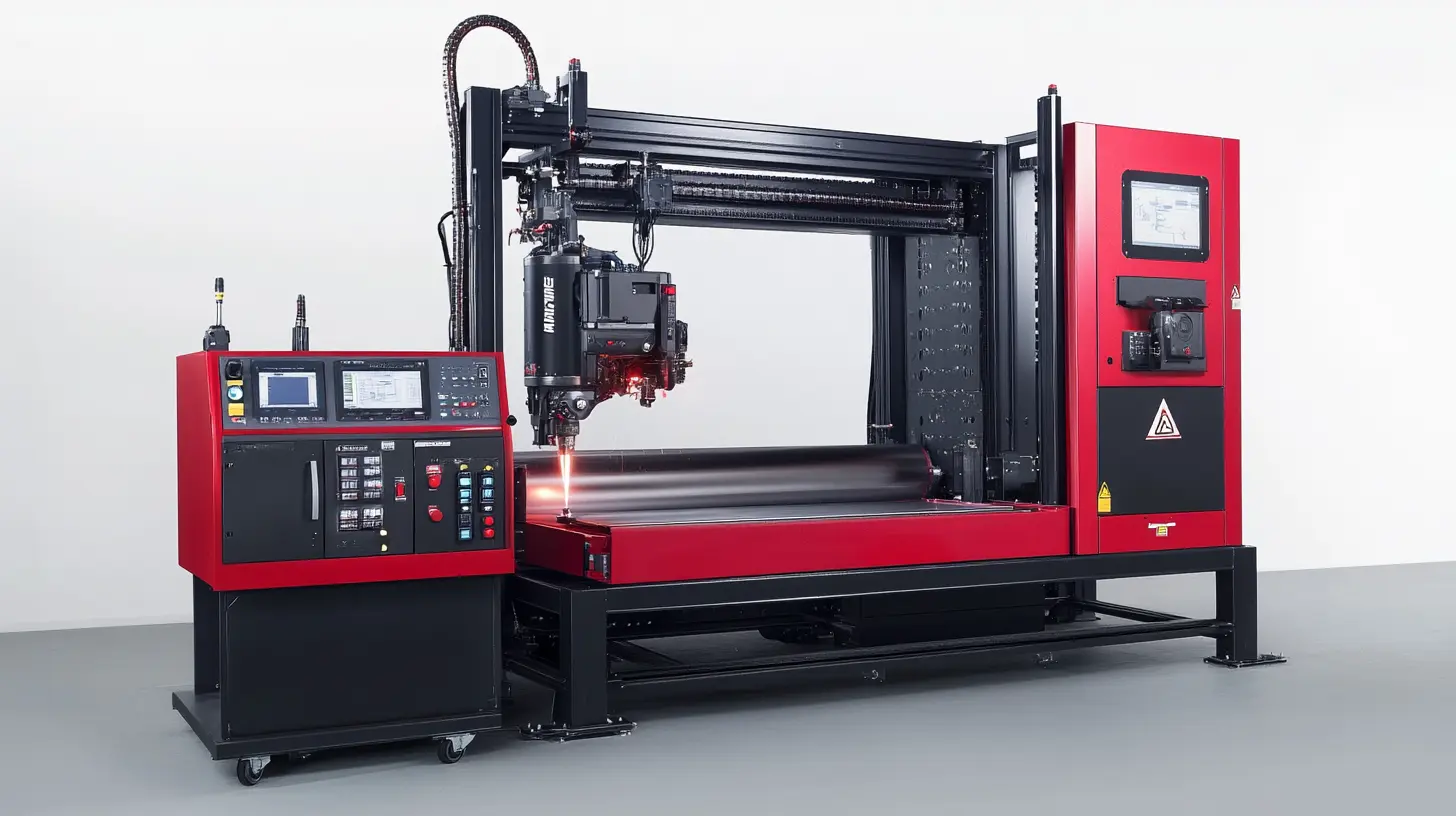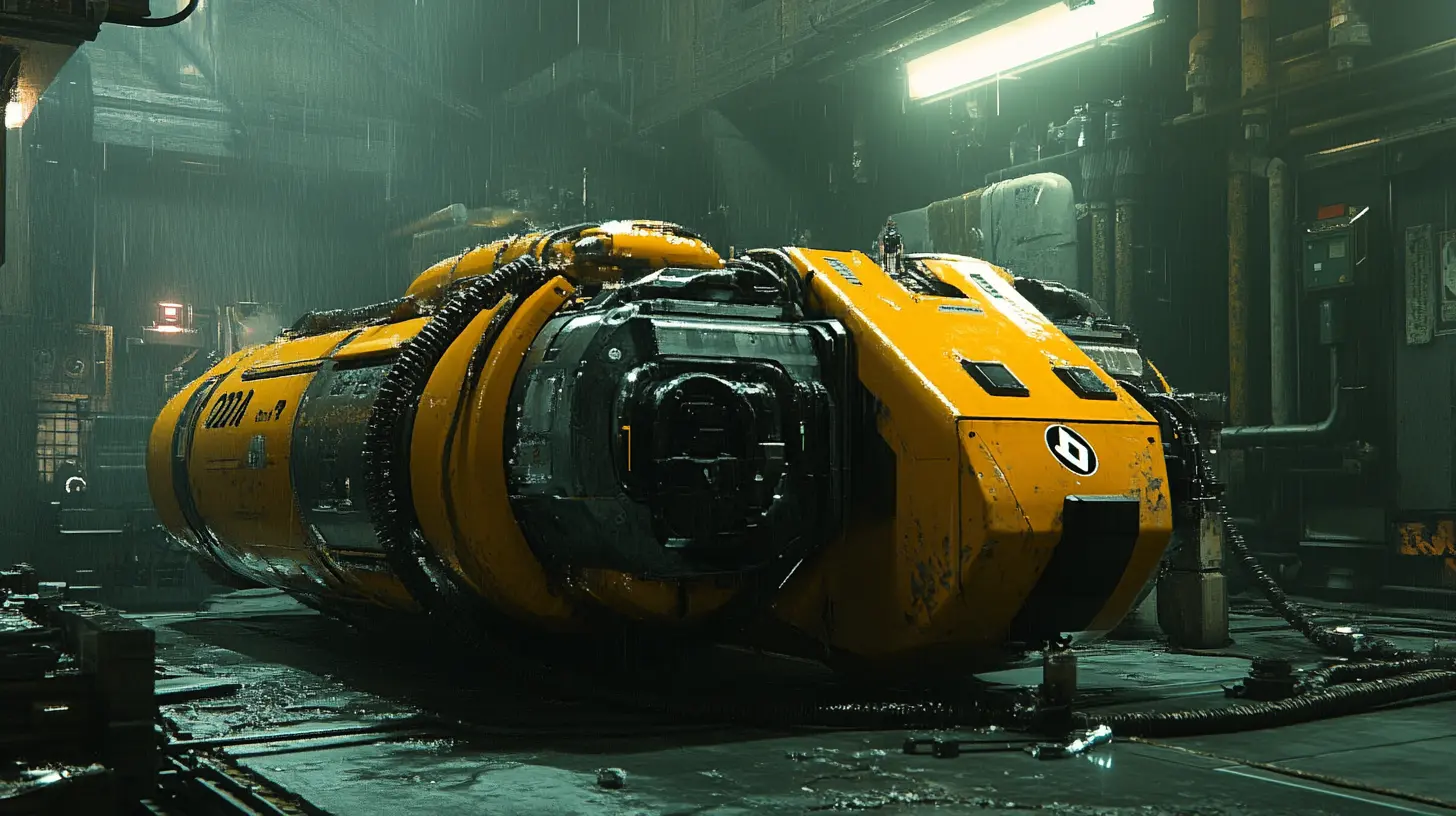The welding industry is standing at a threshold of advancement, in particular, Mig Welding Machines. A very recent market research report by Grand View Research states that the global welding equipment market is poised to be a big player of USD 24.3 billion in 2026, with a primary thrust on innovative welding processes and equipment. Enhanced adoption of automation in manufacturing would propel the growth owing to the effectiveness and consistency that Mig Welding Machines can offer. Thus, as industries march toward lots of production with lower operational costs, demand for such high-quality and advanced technologies will be in place.
Among the companies that have established a formidable presence in this fast-evolving landscape is TAIZHOU YIKE MACHINERY CO., LTD, situated in Xiayangzhang, Daxi Town Wenling City, Zhejiang, China. The mission of the company is to manufacture all kinds of inverter welding machines of the highest quality and at the most competitive prices, and it is very much poised to capitalize on the changes the market is undergoing. While we look at the innovations of Mig Welding Machines for 2026, YIKE MACHINERY remains dedicated to integrating technologies with exciting new features that improve welding performance and operational efficiency. This blog will look at the options and innovations driving the future of Mig Welding Machines-from productivity to redefining industry standards.

With MIG welding technology undergoing rapid changes, 2026 is expected to be a watershed year with many more wins waiting to be achieved in quick succession. This increased integration of automation and digital monitoring systems in MIG welding machines helps improve precision and efficiency, which together with the resilience of demand for increased productivity is an industry requirement. For example, reports indicate that the global market for welding equipment may be around $25 billion by 2026, driven by innovations aiding in faster, safer, and more reliable processes. Use of artificial intelligence and machine learning by new-age technologies is going to disrupt conventional MIG welding methods. Real-time adjustments could thus be applied during the welding process to eliminate defects considerably, thus improving the weld quality. The second point is the advances in welding materials and processes like laser-assisted MIG welding that promise increased joint strength and decreased post-weld processing time, significantly becoming paramount for high-value industries such as aerospace and automotive. In contrast to global competition, the military aviation sector in India is going through various transitions as well. Development of indigenous fighter aircraft and upgrades to the existing fleets are cases in point that call for strong welding solutions that can support advanced aircraft manufacturing. All this continued reliance on older types of aircraft, such as the MiG-21, alongside the postponing of their retirement, indicate the application of proven technologies and the ushering of newer manufacturing methodologies, making adoption of advanced MIG welding technologies paramount.

MIG welding machine development is proceeding on a promising trajectory, particularly with advancing control systems foreseen to come into play by 2026. These innovations will ultimately provide improved precision and efficiency in the welding process while introducing new features to further enhance user experience. Going by industry reports, the demand for advanced welding technologies is expected to grow at a compound annual growth rate (CAGR) of approximately 6% in the coming years due to the increasing need for automation and quality assurance in manufacturing processes.
An area of improvement is the establishment of smart control systems developed for MIG welding machines. These control systems employ advanced algorithms and real-time feedback mechanisms which carry the impact of optimizing key welding parameters-reducing the high variability of voltage and travel speed-to achieve consistent weld quality. The shift in technology also ensures that operators can make quick adjustments if things go wrong, thus minimizing the chances of defects and reworking operations. Newer studies indicate that the adoption of smart technologies in welding operations can reduce wastage to the tune of more than 30%, which means greater productivity and sustainability overall for the industry at large.
Further, the partnership between MIG welding and new technologies such as the IoT (Internet of Things) is enhancing traditions. The connection of welding machines with cloud space enables monitoring and remote analysis to provide predictive maintenance and insights into operations. The welding sector would enhance operational safety and efficiencies as manufacturers ramp up adoption of these advanced features. Together, these innovations illustrate the MIG welding industry adapting to future challenges and increasing demand for precision and reliability in production environments.

AI and automation in MIG welding operations set to change the manufacturing landscape for good, starting with improved efficiency and precision. As per MarketsandMarkets, the global welding equipment market is projected to reach $28.5 billion by 2026, with a considerable chunk coming from innovations in welding technologies like MIG welding. AI algorithms ensure real-time process adjustments to attain performance optimally while at the same time minimizing defects. It analyzes several parameters, such as heat input and arc stability, to give welders momentary feedback that can help improve weld quality and lower rework costs.
Furthermore, companies have adopted robotic solutions to stiffen the production lines, which is becoming quite trendy in MIG welding automation. The International Federation of Robotics states that industrial robot adoption in the manufacturing domain has gained a whopping 12 percent per year, with MIG welding as one of the main applications. Automated MIG welding systems operate round the clock and speed up operations while minimizing human error. This leads to high productivity and safe working conditions by reducing worker exposure to hazardous environments.
Collaborative robots (cobots) present an exciting opportunity in the MIG welding space. These robots can operate alongside human welders and assist with workload positioning and complex welding patterns, dramatically expanding the capabilities of traditional welding teams. An American Welding Society survey indicated that over 70% of welding professionals believe that AI and automation can positively impact job satisfaction and opportunities within the industry. With the transition into 2026, these improvements are set to revolutionize MIG welding and position it as a more efficient and adaptive process.

The welding industry is making rapid changes with respect to energy efficiency in MIG welding plants; indeed, energy consumption in welding processes hereafter is said to account for around 10-15% of total industrial energy consumption. This figure emphasizes the need for innovative work that will quite likely increase performance yet reduce energy costs. The latest in improvements on the MIG welding machines for 2026 emphasizes high-efficiency transformers integrated with inverter technology, which can reduce power consumption levels up to 25% versus conventional systems.
Moreover, the manufacturers are notably tapping into smart technologies for MIG welding machines. These facilitate the real-time adjustment and monitoring of power usage equipment based on specific welding parameters. One study by the International Welding Institute predicts that this added capacity will, in itself, further reduce the energy outlay of the welding operation by 10%. Not only does that speak to the environmental benefits of implementation, but to the economy.
Other areas also occupying the technological spotlight are new shielding-gas compositions that will give improved welding quality while ameliorating arc stability. Some investigations have shown that an appropriate gas mixture can lower the voltage fluctuation, and, consequently, less energy will be wasted during the process of welding. As firms endeavor to align with regulatory requisites and sustainability goals, the anticipated growing demand for energy-efficient MIG welding machinery will continue to sustain the impetus for manufacturers to evoke a constant culture of innovation while providing energy mitigation solutions for the welding industry.
Portable MIG welders have evolved steadily and are being used with great convenience and performance enhancements in welding. New technology is making these machines more lightweight and user-friendly, and they come with advanced and even high-tech features for both amateur users and professionals. For example, the introduction of fume-control MIG guns has revolutionized the welding environment, with efficiency up to 95% in fume capture. This contributes to a healthier working environment and allows welding operations to be extended without the usual downside of traditional welding.
Health and safety improvements put forward such an environment for the growth of welding. The electric welding machine market is expected to increase from USD 5.52 billion in 2023 to USD 5.93 billion in 2024, with a compound annual growth rate (CAGR) of 7.81%. This level of growth is indicative of the increasing demand for modernized welding solutions, with portable MIG along with mini inverter welders being right at the top of the list.
In addition to this, fresh models support multi-process functionality, enabling users to switch among MIG, TIG, Stick, and more with ease, all within one small package. Such functionality boasts enhanced performance and tremendous convenience for users undertaking different projects and further validates the presence of portable welding technology in today's dynamic work environment. With changing trends in welding, these technologies provide ample room for anyone wishing to polish up on welding skills or to take on new projects with all the confidence in the world.
The ongoing transformation of the MIG welding technosphere includes increasing safety innovations aimed at protecting operators while boosting overall operational efficiency. As 2026 nears, manufacturers are now integrating safety features into their MIG welding equipment since the companies are demanding these in response to increased industry demands for effective risk management in high stakes environments. New models, for example, come with shut-off systems based on automatic triggers in the event of unforeseen malfunctions so that injury-causing accidents can be reduced significantly.
In addition to protecting MIG welding machine operators against harmful sparks through enhanced protective barriers and ergonomic designs, healthier workspace conditions have been established. Recently, an industry's report quoted that strengthened safety features permit injury decrease within the workplace personnel by as much as thirty percent. This is in keeping with a much bigger scenario of workplace safety and innovation in the industry as demonstrated through various upcoming conferences and award functions acknowledging such smart technologies advances.
It is likely that we may see more innovations, including the introduction of real-time monitoring systems in MIG welding machines. These systems will give operators valuable information concerning their welding environment and safety metrics, thus allowing immediate action to avert any risks. Hence, there is operating intelligence and a lot of emphasis on safety measures. All of this bodes well for the enterprises adopting the latest technologies, because they would not only gain benefits in productivity but also in ensuring the wellbeing of their workforce.
However, as 2026 approaches, things will soon change significantly in the area of MIG welding, especially regarding material compatibility. The modern machines are built using advanced technology that would allow them to work with a more extensive range of materials, which includes high-strength metals and non-ferrous alloys. A recent report from the American Welding Society states that by 2026, MIG welding demand will increase in industries such as automotive and aerospace by 15%, thus requiring innovations that cater to this material diversity.
Such prominent breakthroughs in MIG welding machines include their newest implementation of most advanced control systems governing arc behavior dictated by the material being welded. In this way, one achieves quality welding and reduces defect risks. For instance, the newest developments in pulse MIG welding technology promote effective welding of metals like aluminum to stainless steel, which have been notoriously difficult to weld together due to their thermal properties. According to industrial analysts, companies implementing these technologies realize a decrease in rework rates within a margin of up to 30 percent, thus improving their productivity and cost-effectiveness.
Advances in filler materials play a critical role in this new era of MIG welding. Manufacturers are increasingly supplying customized wire compositions matching the mechanical properties of the parent materials involved, driving the creation of strong, durable joints. A study conducted by the International Institute of Welding reports that compatibility of filler wire with advanced high-strength steels may help to improve joint strength in excess of 20 percent. Skilled welding professionals need to keep active in welding innovation because versatility and accuracy will be the keys to a bright future; hence, continuing research in developing metals or materials compatibility is crucial.
What quite constitutes an essential focus of manufacturers trying to produce better efficiency and output, or even both, is improving the earlier installed MIG welders. The year 2026 then promises significant welding technology innovations that can reshape MIG welding machinery. Replacement comprises important upgrading measures. In the major cases, the frame is just as the machine, with its accessories designed to perform welding automation features. Automation would extend the welding process, add consistent quality, and reduce human error. Manufacturers are finding ways of putting AI and machine learning algorithms into the welding machines that will make adjustments on the fly for different materials but will also measure the thickness in real time.
Also, further improvements in power sources, making it importable in MIG welding machines, are expected to add to performance enhancement. The shift to more energy-efficient models-cum inverter types-makes for better weld quality at lower power consumption. For any operator who wants to go the sustainable way, this innovation means better performance together with lower operational expenses. Features like improved portability and easy interface will also make welders better equipped to carry out their work better either onsite or in the workshop.
Along with these upgrades, the ongoing development of welding wire and consumables is significant in improving the picture still further. New stringers, which will give stronger joints and less spatter, are being researched and developed, thus providing welders with the best tools available for this new work environment. In the future, the future companies, which would give more emphasis to the upgrading of their MIG welding technologies, would not be only able to improve the productivity but also able to gain a competitive edge in the fast-changing market.
Changes are round the corner for the MIG welding industry as the year 2026 comes nearer with a flock of innovative brands that are ready to change the world. Emerging brands not only participate in powerful industrial processes now but also innovate, taking the MIG welding machine sector to new extremities with automation and advanced technologies. Reports tell us of an impending huge growth in the MIG welding machines market, with a projected compound annual growth rate (CAGR) of 5% and above in coming years, driven by machine functionalities and user-oriented designed developments.
Two of the brands to watch in this space are startups specializing in smart welding technology and energy-efficient solutions. These brands integrate artificial intelligence and machine learning into their devices for real-time monitoring and adjustments to maximize performance. Innovations of this kind give a powerful tool for enhancing productivity and minimizing waste, thus answering the demand for sustainable manufacturing.
With initiatives such as the Interactive Innovation Conference in April 2026, the MIG welding industry should propel the showcase of the fascinating developments of several thought leaders. This summit will provide a platform for pumping life into ideas and increasing creativity within the MIG welding space, inducing technological advancement. As we blankly move towards 2026, the way forward for welding technologies will be determined very much by the collaboration of emerging brands and well-established companies.
The welding industry, as we head toward the year 2026, has begun to embrace a demand for sustainable means of designing possibly MIG-welding machines. Thus, technology is improving with sustainability being set as its master principle to cut down carbon footprints along with new environmental regulations. Sustainable welding solutions in the Global Welding Equipment Market report are projected to enjoy a growth rate of 15% per year, indicating that consumers' preferences are changing greatly in favor of environmentally friendly-welding solutions.
A significant trend in MIG machine technology is energy conservation. The new machine models apply inverter technology for savings in energy consumption of as much as, say, 30%, while improving weld precision and quality. For now, hybrid energy models that combine convention sources of power-convention sources of power and renewable sources- can now be drawn into consideration. From the I.I.W, it is shown that solar-assisted MIG systems reduce greenhouse gas emissions by more than 20%, a big positive step toward sustainability.
Also, there is a tendency for manufacturers to become more engaged in the use of recyclable materials to manufacture welding machines. Such practices are conducive to reducing waste in the manufacturing process and creating a circular economy for the welding industry. According to reports from the Welding Equipment Manufacturers of America (WEMA), close to 40% of new welding machines under design are made almost 50% out of recyclable components. With this opening out, industries find themselves continuously thrusting toward greener futures, lending proof to the fact that environmental preservation and technological advancement can thrive together.
Modern MIG welding technology is incorporating advanced control systems, automation features, and energy-efficient power sources to improve material compatibility, weld quality, and overall efficiency.
Newer MIG welding machines can handle a wider range of materials, including high-strength metals and non-ferrous alloys, due to technology that optimizes arc behavior specific to each material.
Pulse MIG welding technology facilitates the effective joining of challenging metals, such as aluminum and stainless steel, and can reduce rework rates by up to 30%, enhancing productivity and cost efficiency.
Customized filler wire compositions that match the mechanical properties of base materials can significantly improve joint strength, enhancing the overall quality and durability of welds.
Manufacturers are focusing on energy-efficient technologies, using recyclable materials, and implementing hybrid energy models to reduce carbon footprints and align with stricter environmental regulations.
The integration of artificial intelligence and machine learning into welding machines allows for real-time optimization of weld settings, improving uniform quality and reducing human error.
New MIG welding models are adopting inverter technology to decrease energy consumption by up to 30% and enhance weld quality, thus contributing to sustainable practices.
Approximately 40% of new MIG welding machines are being designed with at least 50% recyclable components, promoting a circular economy within the welding sector.
Solar-assisted MIG welding systems can reduce greenhouse gas emissions by over 20%, significantly improving sustainability metrics in the welding industry.
Companies that upgrade their MIG welding technology can expect enhanced productivity, improved weld quality, reduced operational costs, and a competitive edge in the evolving market.

